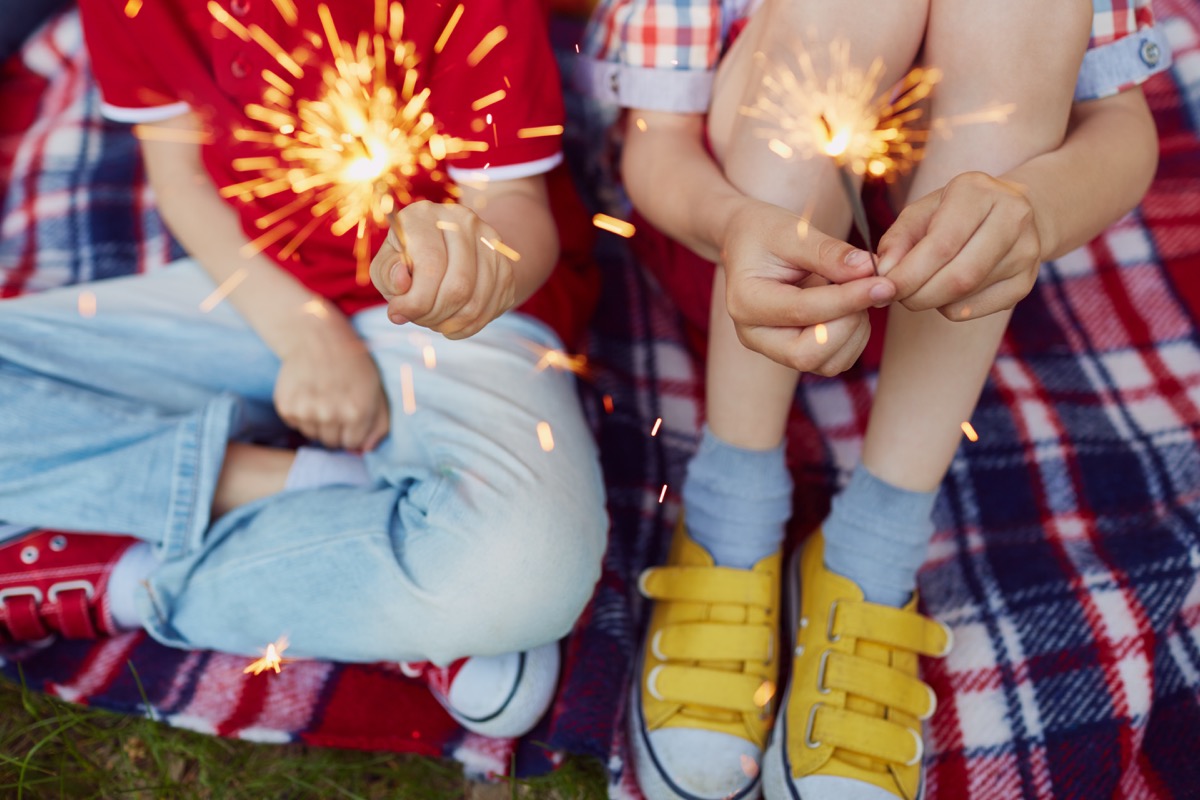The U.S. Consumer Product Safety Commission’s (CPSC) Fireworks Annual Report, which was released in June, estimates that there were 10,000 firework-related injuries treated in ERs nationwide during 2019. But 73 percent of those injuries occurred during the one-month period between June 21 and July 21, in which the Fourth of July falls. And sparklers were responsible for 12 percent of those ER visits, the highest number of any kind of firework. Firecrackers (of the small, large, illegal, and unspecified varieties) followed closely as the runner-up, responsible for 11 percent of firework-related ER visits. And rockets, both missiles and bottle, were behind 6 percent of ER firework injuries. “Sparklers are often viewed as harmless but let’s be clear, they can be deadly if not used properly. They are actually the most often cause of any injuries that we see firework-related,” former CPSC chairman Ann Marie Buerkle said at the group’s annual firework safety demonstration in 2018, ABC News reported. But why are sparklers so dangerous? According to the CPSC, sparklers burn at temperatures of about 2,000 degrees, which is hot enough to melt some metals. As Heather Trnka, the injury prevention supervisor at Akron Children’s Hospital, told the Akron Beacon Journal, that’s even hotter than a blowtorch.ae0fcc31ae342fd3a1346ebb1f342fcb One of the main issues is that parents give these fireworks to their children under the assumption that they’re a safer kind of firework. However, 55 percent of those sparkler-related injuries in 2019 were attributed to children 4 years old or younger. “I don’t know how many parents will hand their kids a blowtorch, but they will hand them a sparkler,” Trnka said. And this year presents a particular danger in that wearing a mask while lighting fireworks could do even more damage. As Donna Skoda, MS, RD, health commissioner of Summit County, Ohio, pointed out to Akron Beacon Journal: “You have a cloth that is flammable covering your face and you are swirling fire around your head.” RELATED: For more up-to-date information, sign up for our daily newsletter. To help you and your family stay safe this Fourth of July, Ruta M. Pakalns, MD, of the Marshfield Clinic Wisconsin Rapids Center, says the National Fireworks Safety Council (NFSC) has a list of safety measures to practice when using sparklers: And for more safety for the upcoming holiday weekend, check out The CDC Director Has Issued This Warning About July 4th Weekend.
